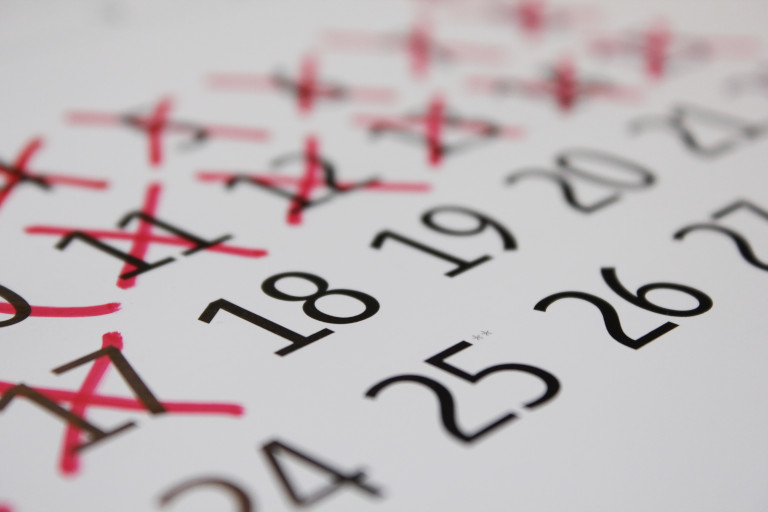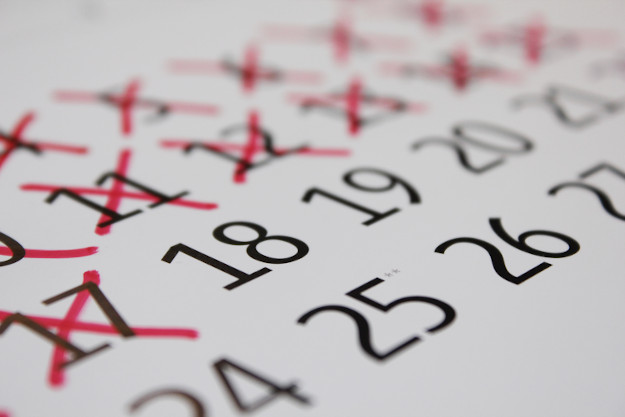
If you’re out there wishing there was an amazing template to guide you through the outlining process, you are in luck! Author Karen Wiesner’s “30 Day Method” is the perfect guide for those writers out there yearning for a simple to-do list to help them knock out their initial novel outline. All it takes is some daily writing and dash of dedication, and in just over four weeks you’ll have an outline that’ll easily transform into the novel of your dreams!
Week 1: Putting Down the Basics
The first week of this outlining process is dedicated to basic sketches of characters, plots, and setting, outlined and ready to use for the following stages of this outline process.
The first day of this week is dedicated to character sketches. This day is reserved solely for character sketches, so invest some time into this step. Outline your characters’ physical characteristics, life events, motivations, and everything you’ll need to know about them to get started. Don’t just outline your main protagonist and antagonist either. Give every character a little sketch, even if it isn’t the most detailed.
Day two of the first week is for outlining your research. This does not mean you need to research everything in one day. There will be a full step for that later. What you need to do at this step is come up with everything you may need to research. What town will you need to look into? What careers do you need more info on? List out anything you can think of, and look into it later down the line.
Plot sketches are your day three task. Your final plot sketch may look something like a tree. Begin by writing out your main plot and its intended resolution. Once you’ve got that, connect smaller plot lines to the main one, giving them all an approximate time for when they tie in to the main plot. When you’re finished with this outline, you’ll ideally have several mini plots connected to your main plot at various points.
Days four and five are dedicated to summary outlines. Summary outlines are essentially a timeline written in prose. Think of this like an extended book jacket that gives away the ending. Sit down and write a few sentences about every scene in your book connecting them together with important details. When finished, you will probably wind up with a one to two page summary of every important event that happens in your novel.
Day six is a day for taking notes. After reading your completed summary, take inventory of any small things that you should keep in mind for a character or scene that aren’t big enough plot points to throw into a summary. Keep a separate page of these miscellaneous notes so they can be continually woven throughout the story. This will help prevent plot holes!
Week 2: Time for Research!
Days seven through thirteen of this process are dedicated entirely to research, so settle in with your internet browser and notepad.
This is where the research list you created in the first week comes in handy. You may have added some things on to your list after creating your summary outline and plot sketches. Take the time to research and write out everything you can about the topics on your list. Even if you’re not sure you’ll include something, look it up anyway. Investigate cities, careers, folklore, anything you could possibly need to create your story, and format it all in an easy-access document so that you can break it out and easily find what you need at any point in the outlining stage.
After doing research for a solid six days, use days fourteen and fifteen to write out the evolution of all conflicts in your novel. Each of your characters should all be involved in major and minor conflicts in some way, but it is easy to tangle all of those delicate plot threads.
To write a conflict evolution, begin by separating your novel into sections. You can simply separate them into beginning, middle, and end, or you can separate them into more parts as you see fit.
To outline the conflicts in the beginning, introduce the main conflict that the story will center around. Once that has been introduced, describe the overall goal that the characters will work to achieve and how this will resolve the conflict. Once the main goals/conflicts are introduced, describe the characters that will be present at this section of your story, what their own interests and goals are, and how they tie to the main conflict of the story.
Outlining the middle of your story will be very similar, just more in depth. Now that scenes are changing and your reader is being introduced to your character, describe the short term goals your characters will be undertaking and how these further the main conflict. Consider and write down individual characters’ goals, how their plans will be interrupted, what is working against them, and any new characters that come into play.
The final evolution of your conflict should feature your characters’ goals coming together into one event that affects how the story resolves. Describe this event and how your characters’ short term goals played into it, then write out the outcome and how it affects all the people playing into it. At this point the story goal should be achieved in some way, whether it is satisfying to all the characters or not.
The final conflict evolution should come out to a few pages, depending on the complexity of your story. This will help guide you through the writing process when you begin to undertake your rough draft.
Week 3: Outlines, Outlines, Everywhere
This week will begin with a formatted outline. Essentially, your formatted outline will take your conflict evolution and break it down into individual scenes.
To begin your formatted outline, list out all the individual scenes that will take place including which characters will be present, location and time including the date, point of view, and what parts of the conflict will take place at this stage. Each scene should wind up with about a paragraph of information formatted in an easy-to-read list. This should take about a single day.
Once the basics are down, days seventeen through nineteen will be dedicated to incorporating your summary outline, research, and miscellaneous notes that you scribbled out on day six into your formatted outline. Your resulting outline should have a few lines of bulleted information and roughly two to three paragraphs describing the conflict and events of the scene.
When your outline is complete, take three days to brainstorm and resolve anything else that you may need to know to complete your outline. This can be needs for additional research, any roadblocks that may come up in your writing, and anything else you can think of. Now is your chance to catch any glaring holes in your planning sheets before making some final outlines.
Week 4: Putting it all Together
The small bits of research are complete, scenes are outlined, now is the time to really break apart your outline into digestible bites that will be easy to write about.
Day twenty-four of this process will be creating a “Day sheet” and a table of contents. A day sheet is essentially a calendar that holds all the scenes that take place on individual days. Begin with the start day of your story and list out which scenes take place in that day and what happens during those days. If you have an planner with tons of writing space, it may be helpful to use one at this stage.
Days twenty-five and twenty-six are dedicated to “Tagging and Tracing”. This method will further untangle your plot threads and help you organize which threads further which goal. Take your day sheet and insert brackets next to events that further certain plot goals.
For example, if your statement is “Carol goes to the grocery store and picks up the supplies necessary for her plan” you would insert (Plot line #1) next to that statement. If your next statement in your scene is that “James runs into Carol and sees the supplies she’s been gathering” but this relates to James’s own goals, you would insert (Plot line #2) next to that statement, and so on, until you easily have every statement “tagged”.
On day twenty-seven, list out all your plot lines and threads into chapters so they are easily readable and clearly relate to each other.
On day twenty-eight, find any sections of your plots that need further elaboration or still contain any last minute plot holes. These can easily arise if you add, change, or remove something in any step of this outline. If you find any details that are weakly supported, find any portions of your outline where you may be able to add in evidence for that detail or repeat it in order to strengthen its relation to the story.
Day twenty-nine is dedicated to adding in any last minute details or research and revising any sections of the outline. If you find that something may need revision, adjust it now rather than later. Remember, it is easier to change a few sentences than a few chapters.
Finally, after your month of hard work, day thirty is a day for you to relax and let the outline sit. While it may be tempting to begin your rough draft on day thirty, let the outline breathe and move on to something else for a few days. You may find that coming back to your outline with fresh eyes will inspire you like never before.
Thirty days may not seem like a lot of time to create a detailed outline of your novel, but Karen Wiesner’s thirty day method will make it possible. By setting a short and specific task for every day of the week you may find that not only is it within reach to create a comprehensive outline of your book, it may be pretty fun too.
Try tooleybook, the free tool created for writing books. It takes less than 30 seconds to create an account and start writing.
With tooleybook you can view timelines, chapter purpose, word count, track time and place, tag scenes, move and organize scenes and more...More Info


